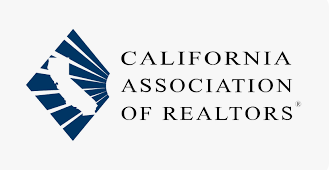Be a Good Neighbor and Get Agreements in Writing
I cannot tell you the number of times people have made agreements with their neighbors sealed with a handshake rather than a contract, only to discover the legal value of a signed agreement. I know it can be awkward to ask a neighbor to put your friendly agreement in writing, but when relationships sour—and they do—handshakes are hard to enforce.
Many times, agreements between neighbors are grandfathered in from a time when two properties were a single parcel. Maybe you have a well just over the property line, but you feel confident your neighbor would never restrict your access to water. Maybe your septic system’s leach field is on your neighbor’s property and everyone’s good with the arrangement.
If you want your neighbor to give up some of their rights, for example, by allowing an easement to a well or by foregoing the right to build over a leach field, you should offer to compensate them for their sacrifice. This can often take the sting out of formalizing an agreement and it makes sense, considering the agreement will increase the value of one property and decrease the value of other, even if it’s only by a small amount.
When you buy a property, it is important to be aware of any such agreements, and if you ever choose to subdivide your property, consider adding language that explicitly outlines what people can or cannot do with the property you sell. These deed restrictions can be worth their weight in gold.
I once sold a subdivided parcel with a deed restriction that prevented people from building any structure that would restrict my view. I was perfectly happy to have a one-story house on that property, but a two-story would have ruined a beautiful view of our valley. In San Francisco and other picturesque places, property values can vary dramatically simply based on the view.
Sometimes, people think zoning will protect them. For example, R1 is a residential designation that typically limits construction to one residence on the parcel. Unfortunately, government officials can change zoning over the objections of property owners, so zoning can provide a false sense of security.
To that end, the State of California recently changed R1 zoning to allow for more than one residence on a single lot. Now, neighbors may find a four-plex next door. As you can imagine, multi-unit dwellings change the feel of a neighborhood.
I respect the environmental benefits of reducing urban sprawl, but having apartment complexes in a neighborhood does change things. If you want long-term relationships with your neighbors, that’s more likely to happen with owner-occupied homes. Multi-plexes usually have renters who tend to move more frequently. Also, conventional wisdom suggests that people take better care of property when they own it. Are there exceptions to these rules? Of course! Some folks lease the same home for decades and take wonderful care of it. But the law of averages doesn’t lean in their favor.
A better long-term solution to defining property use can come from covenants, conditions, and restrictions, collectively referred to as CC&Rs. When developers create a subdivision and want to be more restrictive than existing zoning, they can add CC&Rs to maintain certain standards, such as not allowing fencing, or not allowing people to park RVs in the front yard. In the 1940s, CC&Rs were used to restrict people of color from certain neighborhoods. Thankfully, those types of CC&Rs have since been deemed illegal. The point is, CC&Rs can be undone, but it’s not easy.
The moral of the story is this: pay attention to the fine print on your real estate documents, and if you want something from your neighbor, put it in writing and offer to pay for it.
If you have questions about property management or real estate, please contact me at rselzer@selzerrealty.com or call (707) 462-4000. If you have an idea for a future column, share it with me and if I use it, I’ll send you a $25 gift certificate to Schat’s Bakery. Dick Selzer is a real estate broker who has been in the business for more than 45 years.






